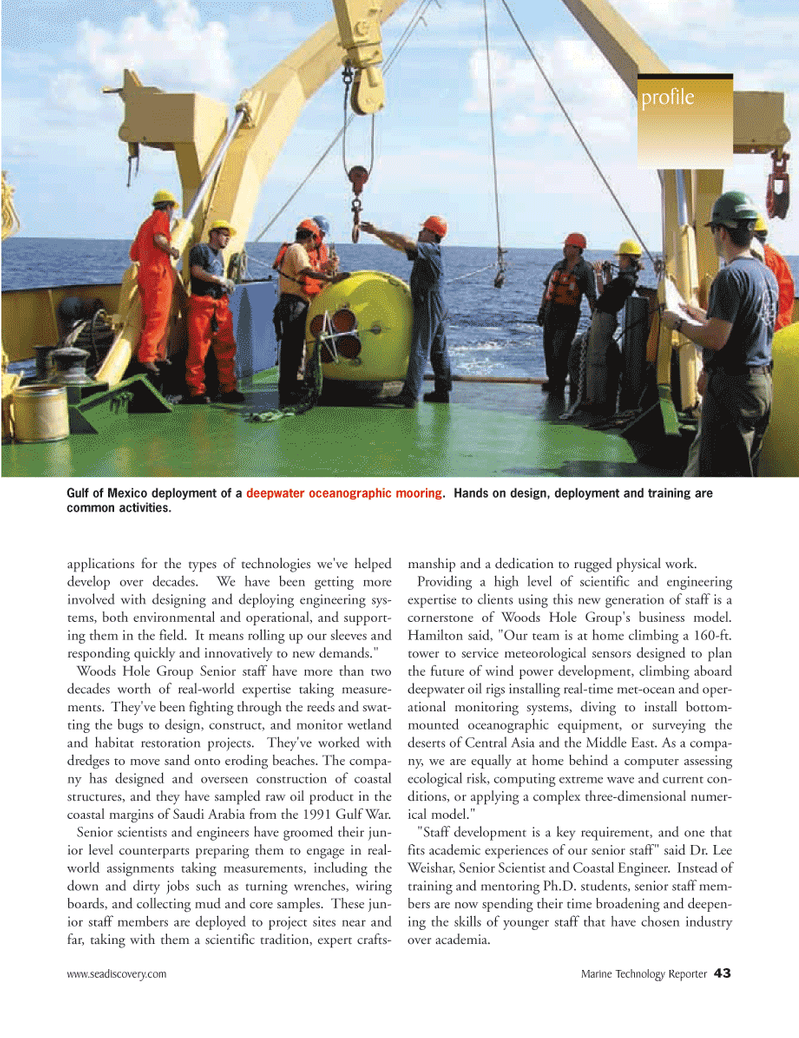
Page 43: of Marine Technology Magazine (January 2006)
Marine Science Institutions
Read this page in Pdf, Flash or Html5 edition of January 2006 Marine Technology Magazine
profile applications for the types of technologies we've helped develop over decades. We have been getting more involved with designing and deploying engineering sys- tems, both environmental and operational, and support- ing them in the field. It means rolling up our sleeves and responding quickly and innovatively to new demands."
Woods Hole Group Senior staff have more than two decades worth of real-world expertise taking measure- ments. They've been fighting through the reeds and swat- ting the bugs to design, construct, and monitor wetland and habitat restoration projects. They've worked with dredges to move sand onto eroding beaches. The compa- ny has designed and overseen construction of coastal structures, and they have sampled raw oil product in the coastal margins of Saudi Arabia from the 1991 Gulf War.
Senior scientists and engineers have groomed their jun- ior level counterparts preparing them to engage in real- world assignments taking measurements, including the down and dirty jobs such as turning wrenches, wiring boards, and collecting mud and core samples. These jun- ior staff members are deployed to project sites near and far, taking with them a scientific tradition, expert crafts- manship and a dedication to rugged physical work.
Providing a high level of scientific and engineering expertise to clients using this new generation of staff is a cornerstone of Woods Hole Group's business model.
Hamilton said, "Our team is at home climbing a 160-ft. tower to service meteorological sensors designed to plan the future of wind power development, climbing aboard deepwater oil rigs installing real-time met-ocean and oper- ational monitoring systems, diving to install bottom- mounted oceanographic equipment, or surveying the deserts of Central Asia and the Middle East. As a compa- ny, we are equally at home behind a computer assessing ecological risk, computing extreme wave and current con- ditions, or applying a complex three-dimensional numer- ical model." "Staff development is a key requirement, and one that fits academic experiences of our senior staff" said Dr. Lee
Weishar, Senior Scientist and Coastal Engineer. Instead of training and mentoring Ph.D. students, senior staff mem- bers are now spending their time broadening and deepen- ing the skills of younger staff that have chosen industry over academia.
Gulf of Mexico deployment of a deepwater oceanographic mooring. Hands on design, deployment and training are common activities. www.seadiscovery.com Marine Technology Reporter 43
MTR#1 (33-48).qxd 1/9/2006 3:36 PM Page 43

 42
42

 44
44
